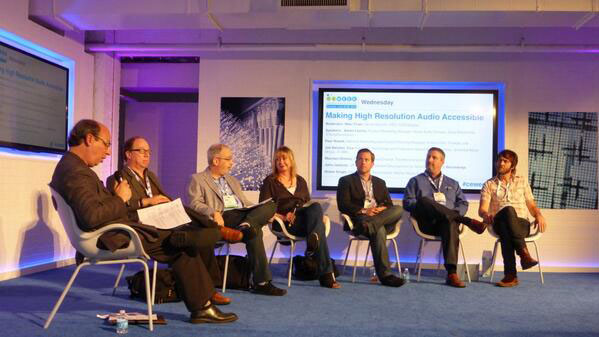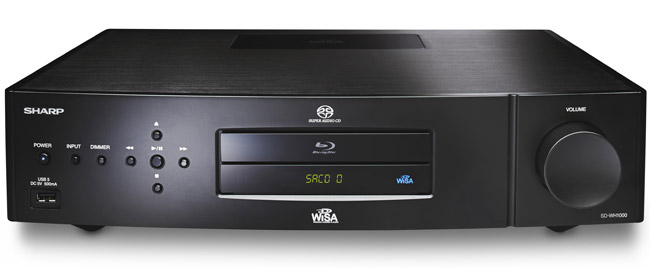Earlier this week, we were talking up the growing popularity of high-resolution audio. Apparently, we weren't the only ones. The subject was a hot topic at CE Week 2014 at New York City's Metropolitan Pavilion.
This week's event included the panel discussion, "Making High Res Audio More Accessible." The conference featured representatives from the Digital Entertainment Group (DEG), Sony, Onkyo, Universal Music Group, The Recording Academy, and Warner Music Group. The collection all pledged support for high-resolution audio and talked about a variety of ways each would work to make it easier for consumers to access and enjoy.
The day before that, The Recording Academy, DEG and the Consumer Electronics Association (CEA) hosted a special "High Resolution Audio Listening Experience" event at New York's Jungle City Studios.
All of this comes right on the heels of the announcement that DEG, the CEA and The Recording Academy had created "a formal definition" for High Resolution Audio. Those guidelines were revealed earlier this month, in conjunction with Sony Music Entertainment, Universal Music Group and Warner Music Group.

According to the CEA's announcement, High Resolution Audio is defined as "lossless audio that is capable of reproducing the full range of sound from recordings that have been mastered from better than CD quality music sources." That definition comes with a series of descriptors for the Master Quality Recordings that are used to produce the hi-res files made available to digital music retailers. The descriptors for the Master Quality Recording categories include:
The guidelines were designed to make sure that each recording will sound like the artists, producers and engineers originally intended.
"We are pleased to be supporting this definition for High Resolution Audio. We believe that a fundamental way to enable increased development of high-def content and hardware, and more awareness and adoption of high-quality listening solutions, is to provide common language and technical descriptors for the music marketplace to use," Darren Stupak, executive VP of U.S. sales and distribution for Sony Music Entertainment. "We think that product offerings that reproduce the full range of sound from recordings, exactly as the artist intended, are a new and compelling option for increasing numbers of music and electronics consumers."
Of course, there were also high-resolution audio products at CE Week -- lots of them. For instance, Sharp was showing off the Wireless High Resolution Audio Player (SD-WH1000U), which can support 7.1 channels of digital sound and 24-bit/96kHz uncompressed audio, all without cables or other add-ons. Big Picture Big Sound Editor Chris Boylan heard a demo at CE Week and said it sounded excellent. Based on the Wireless Speakers and Audio (WiSA) standard, the SD-WH1000U can transmit music to any WiSA-compliant speaker system, as well as any traditional passive speaker with the Sharp Wireless Bridge (VR-WR100U) attached. It's expected to ship this September, with an MSRP of $4,999.

For More Information: